April 16th Scots Book of Days
April 16 –1306 sometime in. The Statute of Provisors (1306), passed in the reign of Edward I, was, according to Sir Edward Coke, the foundation of all subsequent statutes of praemunire. This statute enacted “that no tax imposed by any religious persons should be sent out of the country whether under the name of a rent, tallage, tribute or any kind of imposition.” This became part of The Act of Uniformity, the Test Acts and Penal Laws of England, Ireland and Scotland which were, according to Edmund Burke “a machine of wise and elaborate contrivance, as well fitted for the oppression, impoverishment and degradation of a people, and the debasement in them of human nature itself, as ever proceeded from the perverted ingenuity of man.” Savage, John (1869). Fenian Heroes and Martyrs. Patrick Donahoe. pp. 16. Bans on Catholics, Dissenters from the Established Church Presbyterians, Ban on converting from Protestantism to Roman Catholicism on pain of Praemunire: Wikipedia. repealed circa 1829.
1319 King John II of France born. The son of Philip VI and Joan the Lame, John became the Count of Anjou, Count of Maine, and Duke of Normandy in 1332. He was created Count of Poitiers in 1344, Duke of Aquitaine in 1345, and Duke of Burgundy (as John I) from 1361 to 1363. By his marriage to Joanna I, Countess of Auvergne and Boulogne, he became jure uxoris Count of Auvergne and Boulogne from 1350 to 1360.
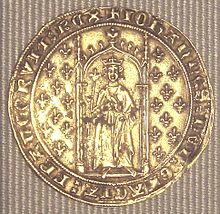 A denier d’Or aux fleurs de lys from John’s reign (1351)
A denier d’Or aux fleurs de lys from John’s reign (1351)
1543 some time in. Pestilence. ‘Repent, repent ye, Hear the words of that God who made you, by the voice of pestilence.’ Jesus Christ in Doctrine and Covenants section 43.
1660 Sir Hans Sloane, 1st Baronet, PRS (16 April 1660 – 11 January 1753) was born Killyleagh in County Down, Ireland. The Sloanes were Scots and immigrated to Ireland under James 1st.
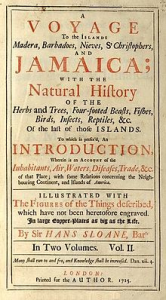 In 1687 Sloane researched in Jamaica. Sloane has letters to Andrew Millar VI in the British Museum.
In 1687 Sloane researched in Jamaica. Sloane has letters to Andrew Millar VI in the British Museum.
1689 Dundee’s rising in Scotland. John Graham of Claverhouse, Viscount Dundee, (Bonnie Dundee). 1648-1689, 7th Laird of Claverhouse, 1st Viscount Dundee raised James’ standard on the hilltop of Dundee Law with fewer than 50 men in support. Although Presbyterian historians later labeled him “Bluidy Clavers” for his vicious persecution of Covenanters, (the Killing Time) he has also been called “Bonnie Dundee”. This was from a song written by Sir Walter Scott in 1830. James had already arrived in Ireland and his letter was on the way promising Irish troops to assist the rising in Scotland.
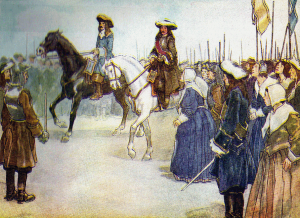 The Deliverer had come. Viscount Dundee. www.heritage-history.com
The Deliverer had come. Viscount Dundee. www.heritage-history.com
1706 Whitehall council chamber, London. Commissioners from Scotland and England assemble. The Scots propose a federal union, two parliaments, and being subject to taxes and regulations as the parliaments judge expedient. The English insist on incorporation. Queen Anne visited the Commissioners twice. Lockhart of Carnwath refused to sign the treaty. Tytler’s Britannica.
1728 – Joseph Black, Scottish chemist (d. 1799)
1746 Battle of Culloden The conflict was the last pitched battle fought on British soil. Jacobite forces of Charles Edward Stuart against an army commanded by William Augustus, Duke of Cumberland, loyal to the British government. (TG84-360) ) Sir John Sempill, Lord Sempill (also variously rendered as Semple or Semphill) is a title in the Peerage of Scotland. It was created in circa 1489 for Sir John Sempill, founder of the collegiate Church of Lochwinnoch. Sempill was killed at the Battle of Flodden in 1513. His grandson, the third Lord, was known as “The Great Lord Sempill”.
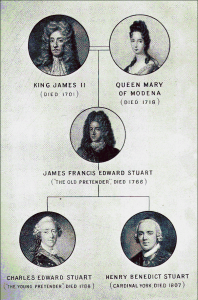 King James II (died 1701) Queen Mary of Modena died 1718
King James II (died 1701) Queen Mary of Modena died 1718
James Francis Edward Stuart ‘The Old Pretender’ died 1766.
Charles Edward Stuart ‘The Young Pretender’ Died 1788
Henry benedict Stuart , Cardinal York Died 1807. It probably didn’t help their cause to change the spelling of their name from the Scots Stewart to the French Stuart (I’m told there were no ‘W’ letters in Francais at that time.)
Clan Sempill His grandson, the 4th Lord, was Ambassador from King James VI of Scotland to Spain in 1596. The male line failed on the death of his great-grandson, the 8th Lord, in 1684. He was succeeded by his sister Anne, wife of Robert Abercromby, who in 1685 was created Lord Glassford for life. In 1688 she obtained a new charter settling the lordship of Sempill in default of male issue, upon her daughters without division by her then and any future husband. Her younger son, the twelfth Lord, commanded the left wing of the government army at the Battle of Culloden in 1746, in the 25th Regiment of Foot, made from Scottish soldiers which today is called the King’s Own Scottish Borderers.
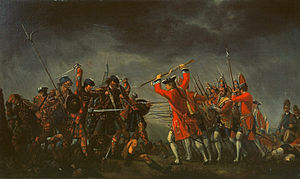 An incident in the rebellion of 1745, by David Morier The Highland attack on the Grenadier Company of Barrell’s King’s Own Royal Regiment” by David Morier; painted in 1746 for the Duke of Cumberland, reputedly using members of the regiment and highland prisoners as models.
An incident in the rebellion of 1745, by David Morier The Highland attack on the Grenadier Company of Barrell’s King’s Own Royal Regiment” by David Morier; painted in 1746 for the Duke of Cumberland, reputedly using members of the regiment and highland prisoners as models.
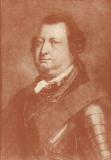 William Augustus, Duke of Cumberland, 3rd son of George 2nd. (Fictional) Tom Jones enlisted in the Duke of Cumberland’s (son of George 2nd) regiment, Henry Fielding author, published by Andrew Miller VI, (1705-1768) (clans Stewart, Lockhart, Hunter) London by the Strand.
William Augustus, Duke of Cumberland, 3rd son of George 2nd. (Fictional) Tom Jones enlisted in the Duke of Cumberland’s (son of George 2nd) regiment, Henry Fielding author, published by Andrew Miller VI, (1705-1768) (clans Stewart, Lockhart, Hunter) London by the Strand.
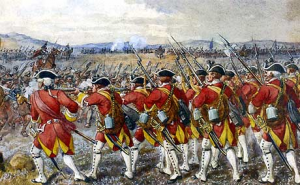 Munro’s Foot receives the Highland Charge
Munro’s Foot receives the Highland Charge
In 1746, Honorable Charles Colville fought at the Battle of Culloden, commanding the British 21st Regiment of Foot which was made from Scottish soldiers and is today the Royal Scots Fusiliers.
www.leagueofaugsburg.blogspot.com
- Colville of Easter Wemyss 1132 2Semple2Montgomery 2Cochrane2Miller 2Simmons2Choate Zoë ToaG
Colville obtained the rank of lieutenant general before his death in 1775.
Colville Motto: OUBLIER NE PUIS. [from French: “I cannot forget”].
Chief: John Mark Alexander Colville, 4th Viscount Colville of Culross
 Crest: A hind’s head couped at the neck Argent.
Crest: A hind’s head couped at the neck Argent.
Colville of Easter Wemyss 1132 2Semple2Montgomery 2Cochrane2Miller 2Simmons2Choate Zoë ToaG
The Battle of Culloden is fought between the French-supported Jacobites and the British Hanoverian forces commanded by William Augustus, Duke of Cumberland, in Scotland after the battle many highland traditions were banned and the Highlands (and Lowlands) of Scotland were cleared of inhabitants.
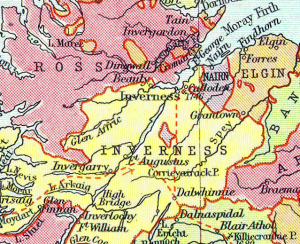 Map of Battle of Culloden 1746, East of Inverness.
Map of Battle of Culloden 1746, East of Inverness.
1746 April 16 The remains of the army retired to Corrybrough; 17th to Balnaspiech by Aviemore j 18th to Ruthven, (S.C.M.343). On or before the 20th the army at Ruthven received a message from the Prince to seek their own safety, and the army dispersed. There is much confusion about the message from the Prince to the army. From Gortleg the A.D.C. Alexr. MacLeod wrote to Cluny stating there was to be a review of the clans the following day at Fort Augustus, and requesting him to join there. That the chiefs of the army had no common understanding, and that this order was incomprehensible to Lord George Murray is shown by his comments indorsed on it, which are printed along with MacLeod’s letter in A.C. 220.
Ker of Graden states that the army stayed at Ruthven some days awaiting an answer which did not come when expected, and in consequence they dispersed (1.363). Kirkconnell says young Sheridan was sent to the leaders immediately after the battle to tell them to shift for themselves (M.K. 158). The Chevalier Johnstone- not a very reliable authority-says that MacLeod was sent by Lord George to the Prince, and returned on the 20th with the laconic answer, ‘Let every one seek the means of escape as well as he can’ (C.J. 167), which, if true, means that the A.D.C. must have-gone from Stratherrick to Ruthven (about 25 miles) with the original letter, gone back at once with Lord George’s message, by which time the Prince had gone to Loch Arkaig, and again returned to Ruthven on the 2Oth-1l very unlikely circumstance. Lumisden, one of his secretaries quoted by Home (H.H. 240), states that the day following the battle the Prince sent a message to Ruthven thanking his mends for their bravery and devotion, and desiring them to do what they thought best for their own preservation. Publications OF THE SCOTISH HISTORY SOCIETY VOLUME XXIII , Pg. 60 (45) April 1897 SUPPLEMENT LYON IN MOURNING PRINCE CHARLES EDWARD STUART ITINERARY AND MAP. Ed.W. B. BLAIKIE, from Narrative of Lord MacLeod, son of the Earl of Cromarty.
1775 Cambridge Massachusetts. Minutemen train. English have secret plans to disarm the colonials, by confiscating the Colonials personal pistols and muskets. It is not about crime, but power. Across the ocean from Scotland, hundreds of thousands of Scots and their descendants are scattered 2,000 miles up and down the Atlantic coast of the colonies, many having been forced by the Highland Clearances after the ’45 (1745 Jacobite uprising). The English military watch the colonial arms, particularly those at Lexington and Concord. English forcing Gun control will cause the spark for the American Revolution.
1780 Battle of Camden South Carolina. Cornwallis and his American opponent Gates were moving towards each other for a surprise attack and their armies met at 3:00am. Cornwallis’ force consisted of 2,000 men, including the Fraser’s Highlanders, (71st Regiment of foot) (now numbering five companies). American militia attempted to advance but hesitated, advancing to within 40 paces of the British only to begin harassing fire on the light infantry. There, the 71st Regiment’s Captain Charles Campbell, watching the activity from a tree stump remarked: “I’ll see you d*ned first!”, and ordered his force forward with the words “Remember you are Light Infantry; Remember you are Highlanders, Charge.” The American militia was swept from the field at bayonet point, crumbling the left of the American line. Gates lost his nerve and fled, assuming the battle over. However, the 2nd Maryland Brigade under General De Kalb continued to resist, and Cornwallis ordered up the 71st from reserve with the words “My brave Highlanders, now is your time.” British victory.
Backstory – Colonel Simon Fraser was the chieftain of the Frasers of Lovat. He raised the 78th Regiment of Foot for the French and Indian Wars. He regained the lands forfeit in 1746, but did not accompany his Regiment to America. He died a Lieutenant General in 1782. The Regiment was officially raised at Stirling Castle and in April 1776 moved to Glasgow. Several clan chiefs supported Fraser in building the regiment. Six of these served as officers. In short order, the 71st exceeded their recruiting needs and the unit embarked for America overstrength, including a large number of combat-proven officers from the old 78th Fraser’s Highlanders.
1829 Joseph Smith the Prophet at Harmony, Pennsylvania. (Clan Mack of Inverness, Malcolm King of Scots). Doctrine and Covenants 6. Sometime in April. Inquired of the Lord through the Urim and Thummim. ‘There is none else save God that knowest thy thoughts and the intents of thy heart.’
‘the city in the Highlands’ is a modern city that is the Highland’s main settlement. www.visithighlands.com/inverness-loch-ness/
1863 – Battle of Vicksburg. Grant commander (clan Grant).
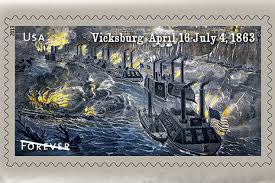 Battle for the Mississippi River.
Battle for the Mississippi River.
1858 – The Wernerian Natural History Society, a former Scottish learned society, is wound up.
1894 Henry McEwan was appointed as the first president of the Deseret Typographical Association.77. 4 July 1830 Edinburgh, Midlothian, Scotland, died 16 april 1894 Salt Lake City Utah Territory.
1936 fictional ‘Martin W. Semple Died in Italy,’ (Semple clan) in a car crash, is the headline to start ‘Mr. Deeds Goes to Washington’. The fictional Scot left a fictional $20 million estate to Semple’s fictional nephew, the fictional Longfellow Deeds, of Mandrake Falls Vermont. Anyway, as thrifty Scots, both Uncle and Nephew saved their money.
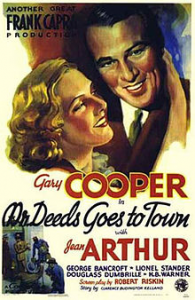 Poster. Gary Cooper, Mr. deeds Goes to Town. And Jean Arthur (Gladys Georgianna Greene) [Norway and England ancestry], who took her stage name from Jeanne d’Arc and King Arthur (legendary 6th century King of Scots, Celts, Picts, Welsh).
Poster. Gary Cooper, Mr. deeds Goes to Town. And Jean Arthur (Gladys Georgianna Greene) [Norway and England ancestry], who took her stage name from Jeanne d’Arc and King Arthur (legendary 6th century King of Scots, Celts, Picts, Welsh).
1956 Jane Romney Crawford, b 31 Dec 1883- d 16 apr 1956 Hymns, Father in Heaven WE Do Believe 180, Grace Gordon, Called to Serve 249
- Crawford of drongan and Haining 1100 2douglas2Stewart 2Ruthven2Kinchin 2jared2 Simmons 2Choate Zoë
2015 2016 Utah is ranked 2nd highest (4.6% of the state population) among the 50 United States with the top percentages of Scottish residents (Wikipedia 26 March 2017). United Health Foundation America’s health rankings Behaviors Total Utah #1. 2015 Report. Combined ranking of Drug Deaths per 100,000 Population, #46, Excessive Drinking % of adults #3, High School Graduation % of Students #25, Obesity % of adults #6, Physical inactivity % of adults #3, Smoking % of adults #1. p.126.
http://assets.americashealthrankings.org/app/uploads/2015ahr_annual-v1.pdf
Disclaimer: The author of each article published on this web site owns his or her own words. The opinions, beliefs and viewpoints expressed by the various authors and forum participants on this site do not necessarily reflect the opinions, beliefs and viewpoints of Utah Standard News or official policies of the USN and may actually reflect positions that USN actively opposes.
Utah Standard News depends on the support of readers like you.
Good Journalism requires time, expertise, passion and money. We know you appreciate the coverage here. Please help us to continue as an alternative news website by becoming a subscriber or making a donation. To learn more about our subscription options or make a donation, click here.
To Advertise on UtahStandardNews.com, please contact us at: ed@utahstandardnews.com.


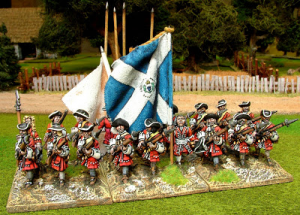
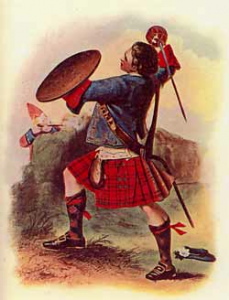
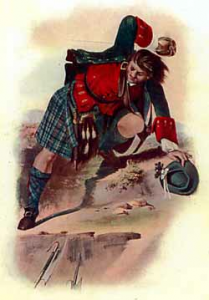
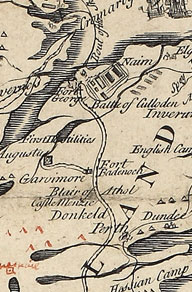
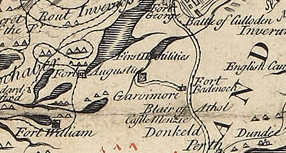
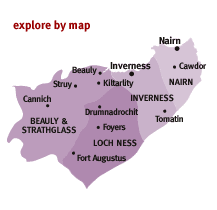
Comments - No Responses to “April 16th Scots Book of Days”
Sure is empty down here...